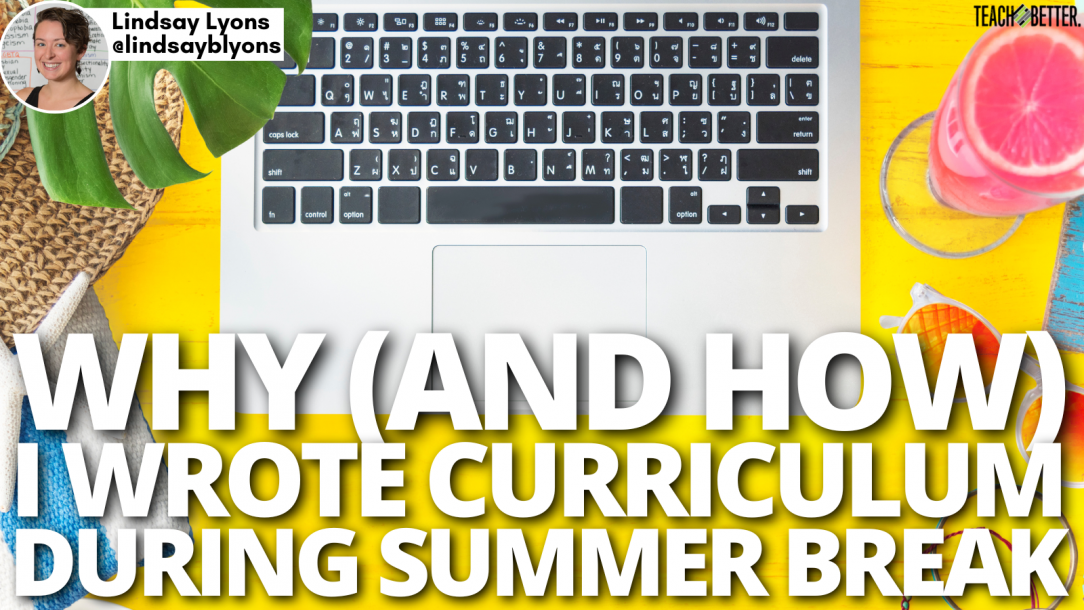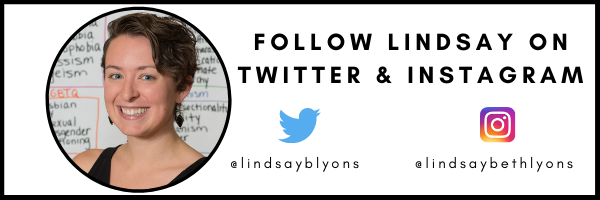TL;DR:
- Summer break can be a great time to create or update lessons.
- Spending time on curriculum while energized can benefit both you and the students in the new school year.
I love the clearly defined break for summer vacation. At the end of each year, I was always ready for well-deserved time off. At the same time, I always found myself imagining how much better I would do things next year. It was energizing to come up with an exciting hook for a new unit or a driving question. So good it hurt my brain. Even at the end of an exhausting year.
An Opportunity to Energize
As counterintuitive as it may be, I kept coming back to teaching year after year because of this summer work. Many leaders are understandably hesitant to invite teachers to summer PD because they are afraid of pushing too much. They can’t afford to lose teachers to burnout.
Here’s what I know from my experience and working with other teachers over the summer to design a new curriculum. Having a (paid) opportunity to dream up innovative projects and units with a team when teachers are rested and at their creative best is a powerful energizer. Teachers who experience a rush of pride for something they’ve designed and are eager to see how students will engage with it are more likely to return for another year.
Having a (paid) opportunity to dream up innovative projects and units with a team when teachers are rested and at their creative best is a powerful energizer. Click To TweetEngaging units also make it easier to teach! The stress of addressing constant interruptions and redirecting off-task students goes away when the curriculum is interesting and accessible to students. When units are designed to address real-life situations, teachers don’t need to spend time answering the question, “Why do we need to learn this?” It’s clear in the question and the authentic project. Another added bonus is that this kind of professional learning experience increases teachers’ confidence. And it increases their skill in designing cohesive, aligned, student-centered units on their own throughout the year.
[scroll down to keep reading]Curriculum That Challenges, Affirms, and Inspires Students
Students also benefit when their lessons are thoughtfully designed by rested, creative brains rather than the night before in a bleary-eyed rush. The space to create without worrying about tomorrow’s lesson enables educators to make sure the curriculum is high quality. Namely, it is appropriately challenging, affirms all identities, and inspires students to create something new themselves. Furthermore, freshly made units that help students grapple with what’s happening in the world right now are more engaging than ones created a decade ago. Additionally, when departments or grade teams work together to create a curriculum, students see the same standards-based language and learning activities in multiple classes. This provides consistent expectations for students and frees up brain space to focus on the class content.
Just a Few Days
Making sure the benefits of this work outweigh the expense of giving up vacation time requires us to keep it short. Just two days is enough to develop a solid outline for a driving question. Then a meaningful project and standards-based rubric and the content and learning activity for each lesson in the unit.
If you feel like you need a complete break from school this summer, close your computer and get out there. But if you’re still reading this post, my bet is you’re like me. And you might get more energy from a two-day creative brainstorm than a week of lying on the beach.
If you are a leader, coach, or teacher interested in learning more about my approach to curriculum design intensives, I invite you to check out my free masterclass: How to Design Units that Engage Students and Advance Justice: 3 Secrets to Creating Standards-Aligned, Student-Centered Curricula in a Sustainable Way.
About Lindsay Lyons
Lindsay Lyons is an educational justice coach who works with teachers and school leaders to inspire educational innovation for racial and gender justice, design curricula grounded in student voice, and build capacity for shared leadership. Lindsay taught in NYC public schools, holds a PhD in Leadership and Change, and is the founder of the educational blog and podcast, Time for Teachership.




